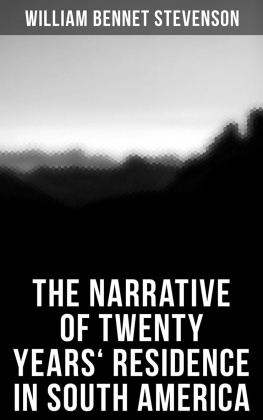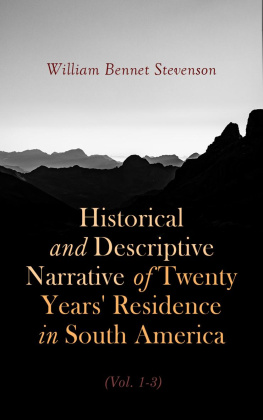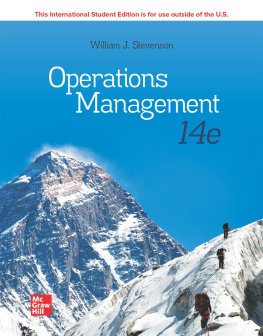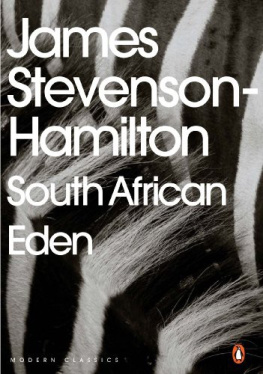PREFACE.
Table of Contents
The interest which the late successful revolution in Spanish America has awakened in Europe renders any genuine account of the new world so highly acceptable to the British nation, that it has become an almost imperative duty in those who may possess original matter to communicate it to the public; for it may be said, without the least exaggeration, that although the countries thus emancipated were discovered in the sixteenth century, they have remained almost unknown till the beginning of the nineteenth.
Fully convinced of these facts, and being urged by my friends, when I was on the eve of again crossing the Atlantic, to publish my collection of notes and memorandathe gleanings of a twenty years' residencein order to contribute my quota to the small stock of authentic matter already laid before an anxious public, I have been induced to postpone my voyage, and to embody my observations in the manner in which they now appear.
It is undoubtedly of great importance to become acquainted with the features of a country which has undergone any remarkable change in its political, religious, or literary career, before that change took place; and it is equally important to know the cause of and the means by which the change was effected. I have therefore given a succinct history of the state of the colonies before their fortunate struggle began to germinate, by describing their political and ecclesiastical institutions; the character, genius, and education of the different classes of inhabitants; their peculiar customs and habits; their historical remains and antiquities; and lastly, the produce and manufactures of the country.
My opportunities for obtaining materials for the formation of this work were such as few individuals even among the natives or Spaniards could possess, and such as no foreigner could possibly enjoy at the period of my residence.
Dr. Robertson's celebrated history renders any account of the discovery and conquest of America unnecessary; but as the Spanish authors from whom his work was collected always kept in view the necessity of lulling the anxiety of general curiosity with respect to the subsequent state of the countries under the Spanish crown, that work cannot be supposed to be better than the materials from which it is formed would allow; to which I may add, that the different books published by the philosophic Humboldt are too scientific, and enter into too few details, to become fit for general perusal.
I am induced to believe, that my descriptions of tribunals, corporate bodies, the laws, and administration, the taxes and duties, will not be considered unimportant, because the newly-formed governments will follow in great measure the establishments of Spain, modified by a few alterations, perhaps more nominal than real. Indeed, the present authorities have already determined, that so far as the Spanish codes do not interfere with the independence of the country, they are to be considered as the fundamental laws of the different tribunals.
The Plates are from original Drawings taken by Don Jose Carrillo, a native of Quito, now in England.
Should the following pages merit the approbation of the British public, the author will feel highly gratified by having fulfilled his duty in both hemispheres; nor will this reward in the old world be accounted less honourable than that which he has already obtained in the new.
CHAPTER I.
Table of Contents
Arrival at Mocha. Some account of Mayo, one of the Cape de Verd Islands touched at on our passage. Description of Mocha, its Productions, &c. Leave Mocha, and land at Tucapel Viejo. Description of the Indians, their Dress, &c. Indians take me to their Home. Description of the House, Family, Food, Diversions. Appearance of the Country. What Trade might be introduced.
On the 14th of February, 1804, I landed on the Island of Mocha, after a passage of upwards of five months from England, during which we passed between the Cape de Verd Islands, and touched at one of them called Mayo, for the purpose of procuring salt, which appears to be the only article of commerce. It is produced by admitting the sea water on flats, embanked next to the sea, during the spring tides, and allowing it to evaporate: the salt is then collected and carried off before the return of the high tides, when the water is again admitted, and the same process takes place. The sea water is here strongly impregnated with salt, owing probably to the great evaporation caused by the intense power of the heat, which also aids and hastens the process on shore. The inhabitants whom I saw were all blacks, with the solitary exception of a priest, and many of them in a state of nudity, even to an age at which decency if not modesty requires a covering. A small quantity of bananas, the only fruit we could procure, and some poultry, were brought from St. Jago's, another of the islands, visible from Mayo.
The Island of Mocha, situate in 38 21 S. and that called Santa Maria, lying about 80 miles to the northward of it, were the patrimony of a family, now residing at Conception, of the name of Santa Maria, who lived on the latter, and sent some people to reside at Mocha, but after the commencement of the war between England and Spain, in 1780, the family, as well as the whole of the inhabitants, were ordered by the government of Chile to quit the islands, under the pretence that these were a resort for smugglers: a pretence derived from the common error, that privacy is preventive of contraband.
During the time that Mocha was in the possession of the Santa Marias a number of the original indian inhabitants, belonging to the tribe found on it when first visited by the Spaniards in 1549, resided there, but they were also removed to Conception.
These two islands having been once inhabited, there are yet to be found some few remains of cattle, which have continued to procreate: on Mocha are horses and pigs, and some barn door fowls. Mocha is about fifteen miles in circumference, hilly in the centre, and sloping towards the coast, more so on the western side, where a tolerably good anchorage and a safe landing place, on a sandy beach, may be found. Fresh water flows from several springs; wild turnips, mint and other herbs grow in abundance; the trees on the hilly part are principally the white cinnamon, named by the Spaniards canelo, the magui, the luma, a tree called espino, and others. Here are also apple, peach and cherry trees, with a variety of wild strawberries, and myrtle-berries. Some solitary seals yet remain on the rocks on the south side of the island.
I left Mocha after remaining there alone thirty-two days, and landed from the brig Polly at Tucapel Viejo, the residence of one of the Caciques, or Ulmenes, of the Araucanian indians, by whom I was most hospitably treated.
The male indians who appeared on the beach were of a reddish brown or copper colour, few of them reaching to the height of six feet. They were finely shaped and very muscular, having a round face, well formed forehead, small black eyes, flattish nose, moderately thick lips and good teeth, but no beard. The whole of the countenance is expressive of a certain portion of vivacity, and not uninteresting; the hair is black and strong, all of it being drawn behind the head and platted. The women are lower in stature than the men, their features similar, and some of the girls, if I be not allowed to call them handsome, I cannot abstain from saying are very pretty. The females wear their hair long, and platted behind their heads: it is afterwards wrapped round with a tape about an inch and a half broad, to one edge of which are attached a number of small hawks' bells: the plait is allowed to hang down the back, and not unfrequently reaches below their knees.










